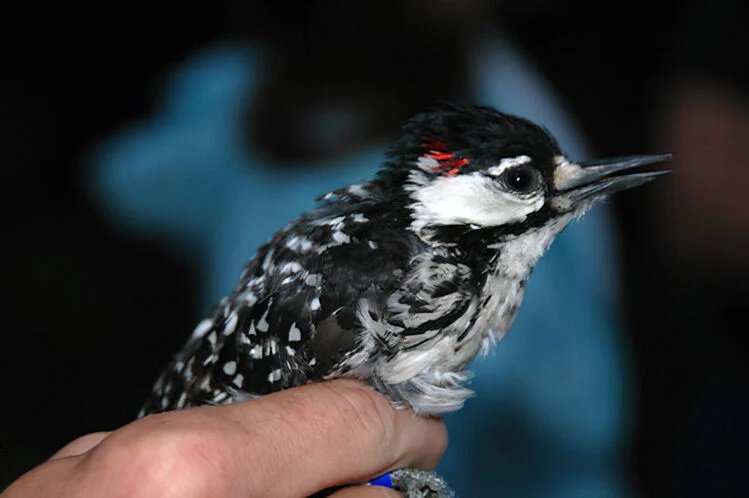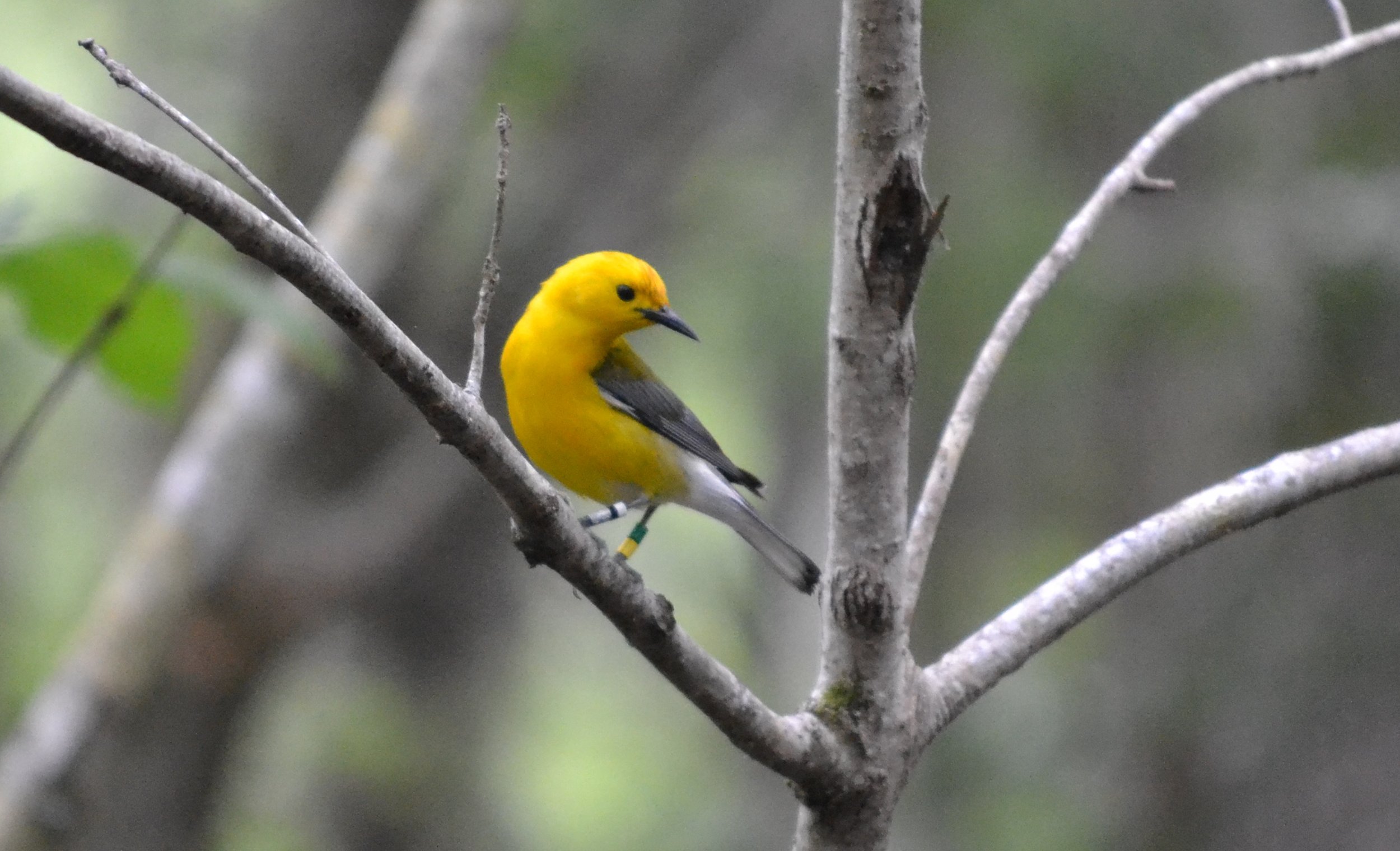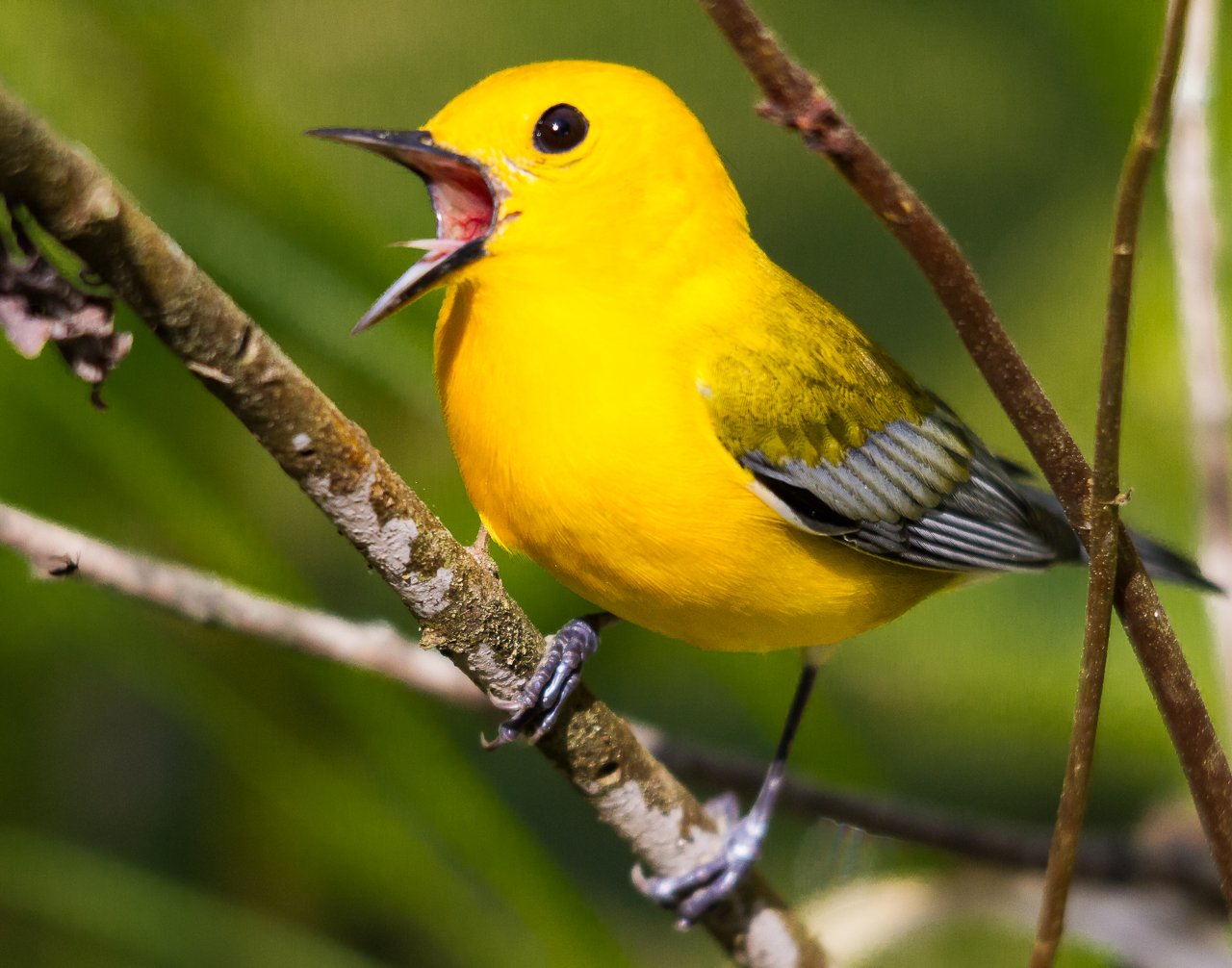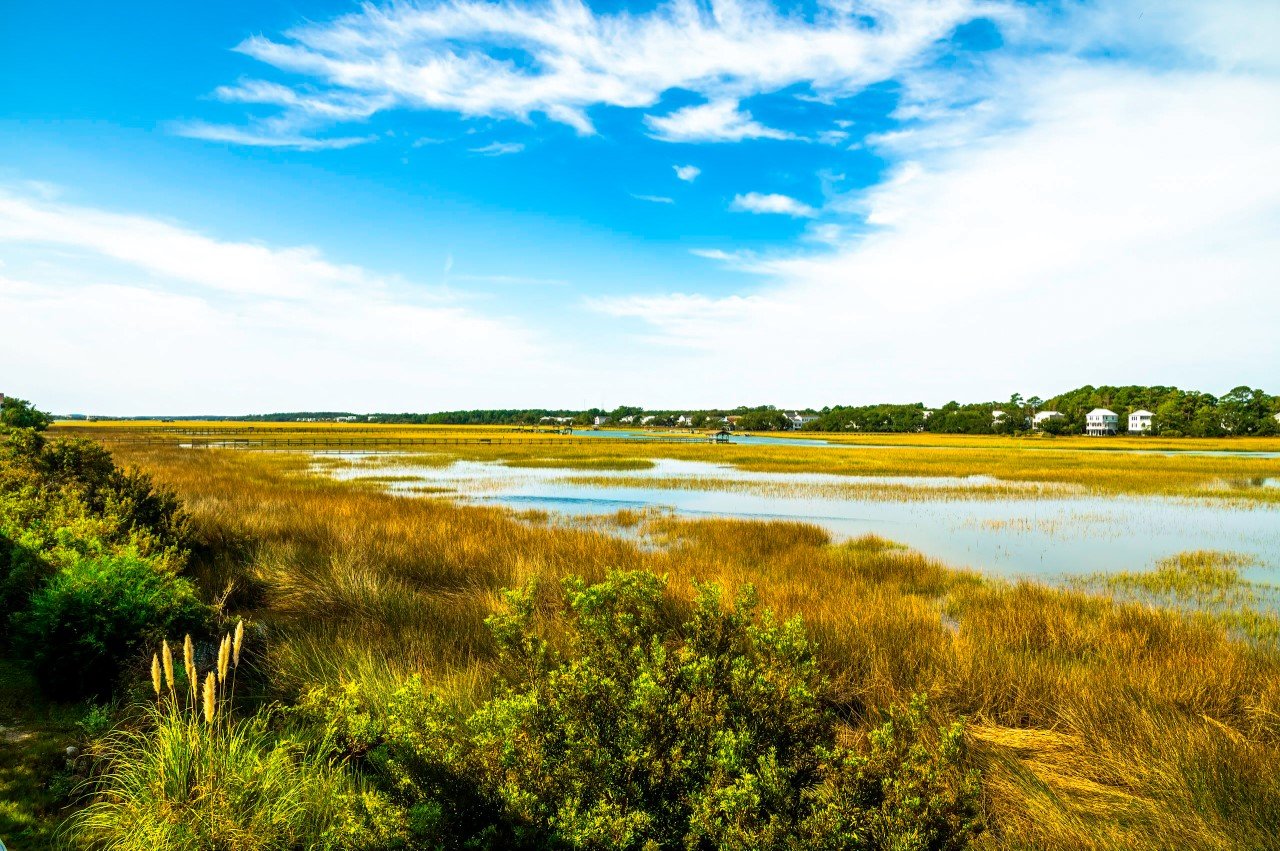Published in Post & Courier 12/29/2022
Published in Post & Courier 12/29/2022
By Clare Fieseler cfieseler@postandcourier.com
- Dec 29, 2022

This week marks 49 years since President Richard Nixon signed the Endangered Species Act. He made the poster child for the law the bald eagle. But among the 160 lesser-known species that became America’s first federally protected endangered species was the red-cockaded woodpecker, a bird once common in South Carolina.
In 1973 when Nixon signed the act, there were about 10,000 such woodpeckers and fewer than 1,000 bald eagles left in the Lower 48 states. After nearly a half-century of protection, both the eagles and woodpeckers have made a comeback. But where bald eagles have beneftted from 20th century pollution regulation and have adapted to living on the edges of human development, red-cockaded woodpeckers continue to struggle against modern threats.
A massive 9,000-acre development planned for the Cainhoy peninsula, wedged between Daniel Island and the Francis Marion National Forest, is ground zero for the threats that the species faces: development, climate change and politics.
The city-sized mixed-use development once called Cainhoy Plantation, now Point Hope, received federal permits last spring from the Army Corps of Engineers to destroy over 200 acres of wetland. The permit also allows the “take” — which includes displacement and likely death — of over 100 red-cockaded woodpeckers.
Environmental groups have been voicing concerns about the destructive nature of the development plan, which is in the city of Charleston and Berkeley County. In August, four groups filed a lawsuit in Charleston’s District Court claiming that the plan violates the Clean Water Act and the Endangered Species Act, while ignoring better alternatives.
“There are development alternatives we presented, but they didn’t express interest,” said Chris DeScherer, an attorney at the Southern Environmental Law Center’s Charleston office. He said the groups are not against development in the region. In consultation with the planning firm Dover, Kohl and Partners, they found development alternatives that accommodated almost the same number of residential homes while minimizing impacts to water quality, wetland birds and the endangered woodpeckers.
The plaintiffs in the lawsuit are the Southern Environmental Law Center, Coastal Conservation League, South Carolina Wildlife Federation and Charleston Waterkeeper.
Wetlands provide habitat for waterbirds, like great egrets and wood storks. While not endangered, these birds play a critical role in maintaining healthy marshes. The adjacent longleaf pine forest hosts endangered woodpeckers. Both state and federal agencies use fire management to maintain the integrity of the habitat for the birds. Longleaf pine forest depend on fire to thrive. This woodpecker-focused fire management in the nearby national forest also supports other critical wildlife there, like long-eared bats and frosted salamanders.
State agencies recognize the value of preserving the two habitats adjacent to each other — wetlands and longleaf pine forest — in order to offset the loss of coastal habitats on nearby Daniel Island. In a comment provided to the Army Corps, the S.C. Department of Natural Resources said it “continues to find the best use for this property, based on the ecological functions and unique resources located there, would be conservation.”
Historically, red-cockaded woodpeckers could be found in longleaf pine forests from New Jersey to Texas in numbers well over 1.5 million. Today the number of woodpeckers has reached 14,000. The permitted number of birds that the developers can “take” represents about 1 percent of the bird’s current population.
A critical number of endangered red-cockaded woodpeckers can now be displaced near a national forest in the process of building a new 45,000-occupant mixed-use development on the Cainhoy peninsula. By destroying 2,850 acres of longleaf pine trees that the birds depend on for survival, many will likely die. The birds are territorial, and carving out a new tree cavity can take up to two years. Once a woodpecker family is displaced from its tree home, successful relocation is rare.
“The most questionable decision is that no environmental impact statement was conducted,” said Michelle Nowlin, a clinical professor of law at Duke University.
Nowlin, who is not involved in the lawsuit, has worked on previous cases involving the protection of red-cockaded woodpeckers. Upon hearing that no impact statement was conducted, as is required by the National Environmental Policy Act, Nowlin was stunned.
“Oh my God … the presence of an endangered species … that is when NEPA should be triggered,” she said. “Then you look at how significant the action is and what are the likely environmental impacts.”
The lack of a formal environmental impact statement for the Cainhoy development and the Francis Marion National Forest is a key argument of the ongoing lawsuit.
Richard Porcher is a local naturalist and former professor at The Citadel. He has written books on the flora and fauna of South Carolina’s forests, including Francis Marion.
Porcher said he has been “fighting” for the recovery of wildlife in the forest for decades. When told about the permit granted to Cainhoy builders that allowed for the deaths of over a hundred woodpeckers, Porcher sighed: “It’s a total tragedy.”
Another argument brought by the lawsuit is that the U.S. Fish and Wildlife Service didn’t fully take climate-driven threats into account, as also is required by law. In its opinion to the Army Corps, which ultimately resulted in the permitted “take” of over 100 birds granted to land developers, the site-specific threat of climate-worsening hurricanes to Berkeley County is barely mentioned.
“Francis Marion National Forest’s (red-cockaded woodpeckers) population is very healthy… but it’s only one good hurricane away from being very unhealthy,” said Tim Evans, director of land conservation at Audubon South Carolina, the state office of the National Audubon Society.
Climate change is one of the issues that Audubon stresses when trying to help the public understand what Berkley County will look like in 30 years. In 1989, Hurricane Hugo destroyed two-thirds of the wookpecker-hosting trees in the national forest. In 1996, a similar hurricane slammed a North Carolina forest, wiping out almost half of the woodpecker-hosting trees with one storm.
Politics at play
Presidential biographer Douglas Brinkley called the Endangered Species Act the “least controversial” legislation of Nixon’s presidency. The bill passed the U.S. Senate by 92-0, and the House, 355-4, before arriving to Nixon’s desk on Dec. 28, 1973. Even the National Rifle Association supported it at the time. But in the 20th century, the act has become highly politicized. How it is applied to red-cockaded woodpecker protection may be no exception.
The Trump administration proposed to delist or downgrading over 40 species — from “endangered” to “threatened” — including the grey wolf and the red-cockaded woodpecker. A species loses protections when its status changes like this. South Carolina’s local Audubon group took a stand against downgrading the red-cockaded woodpecker. Environmental groups and wildlife officials in North Carolina have also come out against the proposed down-listing, claiming it’s too soon.
North Carolina Public Radio reported in 2021 that the Southern Environmental Law Center had obtained documents indicating that the wildlife service internally debated delisting the woodpeckers completely, not just downgrading their ranking on the list to “threatened.” This raised eyebrows over scientific integrity. According to the act, any proposal to change the status of an endangered animal must be scientifically vetted and predetermined population recovery goals must be met.
In South Carolina, red-cockaded woodpecker populations are growing at an annual rate of 4 percent, faster than any other state in the birds’ range. The target growth rate set by the U.S. Fish and Wildlife Service for the species recovery is 5 percent. According to the Endangered Species Act, an endangered species should not be “delisted” unless it has reached the goals set in its recovery plan. Taking an animal of the endangered species list is not always a political act. The bald eagle is a prime example.
In 2007, conservation and industry groups alike celebrated the delisting of the bald eagle, marking a remarkable recovery for America’s most famous bird, whose populations now exceeds 300,000. Breeding pairs can even be found in the green spaces of the nation’s capital.
‘Loving the Lowcountry to death’
To some, the death of any endangered species is a tragedy. To others, development in Berkeley County is a good thing that carries environmental trade-offs.
“Berkley County has to really think about why people are moving there … the beauty, the natural habitat, the coast of South Carolina,” Evans said. “How do you hold onto those things and love those things without destroying them?”
Joe Riley, Charleston’s former mayor, led the annexation of the Cainhoy peninsula into the city’s urban growth boundary in 1996. In the wake of this year’s litigation over the Cainhoy development, Riley defended these actions in a column in The Post and Courier, calling the decadeslong planning for the 9,000-acre property “responsible smart growth.” Riley likened the future development on Cainhoy peninsula as following in the same patterns of sustainable, suburban growth that played out on Daniel Island during his tenure as mayor. Conservationists view the carelessness for local endangered species as something very different.
“People are loving the Lowcountry to death,” Evans said. “We have to get our heads around how we do these things sustainably. … Saying we’re going to take 11 woodpecker colonies is not how we do things sustainably.”
In the meantime, construction continues for services and roads that will serve the 45,000 new occupants of Point Hope. The transportation corridor at the center of it all, Clement’s Ferry Road, has already been widened in some sections, adding two lanes to alleviate congestion of the 15,000 cars and trucks that traverse it daily. Road construction is ongoing. For now, no construction has reached the sections of forest where the woodpeckers live. But, said Nowlin, it’s only a matter of time.
Nowlin, who worked at the Southern Environmental Law Center prior to her tenure at Duke, has worked on other endangered species cases in which the incidental take permits were ultimately revoked, ruling in favor of environmentalists trying to protect an endangered animal from development. In some cases, the critical habitat had already been destroyed during the long slog of litigation.
“There’s no way to undo that damage once it’s done,” Nowlin said.
The current lawsuit challenging the destruction of wetlands and displacement of woodpeckers on the Cainhoy peninsula won’t be resolved anytime soon. Environmental groups are hoping it will be resolved by the end of 2023, with the courts ruling in their favor, marking a win for red-cockaded woodpeckers and the 50th anniversary of the very bill that saved them.
RED-COCKADED WOODPECKERS IN SC
Red-cockaded woodpeckers nest exclusively in longleaf pine trees, making their homes by way of “cavities” carved into the trunks of old-growth trees. Cavities take years to construct. South Carolina was the first state to pioneer the use of artificial cavities to accelerate the bird’s recovery. It was first used as a stop-gap solution when Hurricane Hugo felled large swaths of longleaf pine trees in Francis Marion National Forest.
Less than 5% of the country’s original longleaf pine habitat remain. Much of that is now fragmented, creating small forest islands that isolate the woodpeckers and weaken their gene pool. Francis Marion National Forest on the Cainhoy peninsula is one of the last remaining large tracts of protected longleaf forest. It’s one of six critical population hubs for the species.
Red-cockaded woodpeckers have complex social lives, living in family units called “clusters” that often include a breeding pair and several non-breeding relatives. In South Carolina, the number of family clusters have increased from about 680 in 1993 to more than 1,450 today. In the 1990s, the presence of five woodpeckers clusters on a Berkeley County property held up plans for a new Mercedes-Benz plant. The plant was eventually built in Alabama instead.
MORE INFORMATION:
Riley: Charleston should support responsible smart growth on Cainhoy peninsula
SC’s Francis Marion forest is set aflame on purpose, but some worry about methods
Balancing history and building in a forest: How development is reshaping Cainhoy peninsula
Clare Fieseler, PhD is the climate and environment reporter at The Post and Courier. Fieseler previously served as a reporting fellow at The Washington Post. She earned a PhD in ecology from UNC Chapel Hill and holds a research appointment at the Smithsonian Institution.




